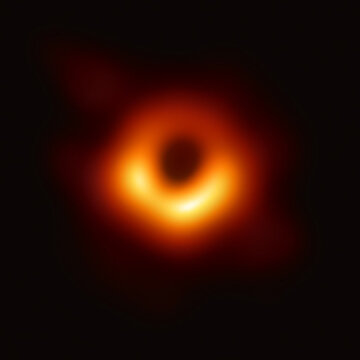1d10 Space Anomalies

The next time you need an unpredictable hazard to liven up your space opera campaign, just roll 1d10 on our anomaly table!
As if asteroids weren’t enough of a navigational hazard, this week we’re venturing into uncharted space to face ion storms, anti-particle clouds, and worse! The next time you need an unpredictable hazard to liven up your space opera campaign, just roll 1d10 on the table below!
- Ion Storm - Randomly discharging ionic particles flood space for the next 1d6x hours, playing havoc with even the most finely tunes shield projectors. For the duration of the storm ship shields, force fields, and defensive screens do not function.
- Magnetic Distortions - An unknown phenomenon warps magnetic fields and electromagnetic particle trajectories for the next 1d4x hours. For the duration of the distortions, roll twice when using ship’s sensors or a personal scanner and keep the least favorable result.
- Anti-Particle Cloud - Difficult to quantify quantum particles spontaneously generate and annihilate each other in all directions, taking many conventional particles with them as they go. For the next 1d8x hours all starship weapons that do not fire solid projectiles deal half damage.
- False Beacon Reflections - Ghostly reflections of navigational beacons confuse telemetry sensors and astrogation calculations. For the next 1d6x days when rolling to navigate a starship roll trice and keep the least favorable result.
- Psychic Leakage - Curdled psychic energy leaks into material space causing painful feedback for the next 1d20x minutes. Any psychic power has a 50% chance of rebounding upon the psychic. If a non-offensive power rebounds, the psychic is stunned for 1d6 minutes.
- Dimensional Flux - Friction between conventional space and hyperspace plays havoc with FTL engines for the next 1d4x days. It is impossible for a starship to engage its FLT engines while within this anomaly. If a starship’s FLT engines are engaged with it encounters this anomaly, it immediately re-enters conventional space in the center of the anomaly.
- Gravitic Turbulence - Distortions in local gravity impede even the most powerful starship engines for 1d8x hours. Cruisers and smaller starships have their speed reduced by half. Larger starships have their speed reduced by three quarters. Fighters and transport shuttlers are unaffected.
- Electron Tempest - Agitated particles create massive electromagnetic discharges in the surrounding space for the next 1d6x minutes. The safest thing to do is power down all non-critical systems and ride the storm out. However, if the ship remains powered up it becomes a literal lightning rod, with a 25% chance every round of being struck by an electron discharge at the end of each round. This chance increases by 10% for every action taken involving a starship system that round (firing weapons, scanning, maneuvering ,etc.) other than shutting a system down. An electron discharge inflicts as much damage as one of the starship’s weapons (choose randomly each round).
- Dark Matter Nebula - Microscopic dark matter particles suffuse the surrounding space for 1d4x weeks. The dark matter particles leech energy from the ship’s reactor, reducing its power output by 10% every hour. If the reactor’s output reaches 0%, the starship shuts down and cannot be powered up without a week spent at port undergoing maintenance. Dark matter particles only effect starships within the vacuum of space. A vessel within a planet’s ionosphere is immune. Additionally, a starship within a planet’s atmosphere can have its power output restored by performing a dark matter purge, a procedure that takes one hour per 10% of power output restored.
- Radiation Tide - Space is flooded with radioactivity for 1d4 hours. The surrounding space is a Severe radiation level area. Provided the ship’s shields are active, everyone within the ship is safe. However, if any shield is at less than 100%, compartments adjoining the faltering shield are Medium radiation level areas.